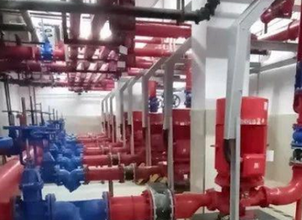Causes and solutions for water leakage in the suction pipe
The causes and solutions of water leakage in the suction pipe can be summarized as follows:
1. Causes of leakage
Construction quality problems:
Improper interface treatment: such as loose joints of socket-and-spigot cast iron pipes or improper ratio of fillers, unsatisfactory welding of steel pipes, irregular flange connections, inaccurate rubber rings, etc.
Improper foundation treatment: When laying the pipeline, the humus, silt, stones, hard objects, etc. within 0.3 meters of the pipeline foundation were not cleaned up, resulting in uneven settlement of the pipeline and leakage or the pipeline was blocked by hard objects and broke and leaked.
Material quality problems:
Pipe defects: Use of unqualified products, such as uneven gaps between the sockets of the socket-and-spigot pipes, uneven flange joints and flanges, etc.
Insufficient anti-corrosion: Improper pipeline anti-corrosion, mainly because the inner wall of the buried cast zinc pipe is not anti-corrosive, the anti-corrosion layer on the outer wall of the pipe is too thin or not anti-corrosive at all, causing corrosion inside and outside the pipeline.

External factors:
Construction damage: Various construction projects damage the pipeline, such as digging underground holes near the pipeline, causing the pipeline to vibrate due to blasting rocks, or carrying out buried projects under the water pipeline, which directly damages the water pipeline.
Foundation settlement: The foundation is not solid or the backfill density of the road backfill transformation does not meet the design requirements, causing the water pipe to sink or shift laterally, resulting in water leakage.
Valve and accessory problems:
Valve failure: The valve is rusted, worn, and blocked by dirt and cannot be closed, causing water leakage.
Unstable piers: At large-diameter elbows and tees, the thrust is large, and the soil behind the piers is loose, causing the interface at the elbows or tees to open, causing water leakage.
Management factors:
Poor daily management: Inadequate daily management and maintenance of the pipeline network is also an internal reason for the high leakage rate of the pipeline network.
2. Solutions
Strengthen construction quality: Ensure that the interface is densely processed, and welding, flange connections, etc. meet the requirements of the specifications.
Remove humus, silt, stones and other debris in the pipeline foundation to ensure the stability of the pipeline foundation.
Select high-quality materials:
Select qualified pipes and accessories to avoid using defective products.
Strengthen pipeline anti-corrosion treatment to ensure that the anti-corrosion layer inside and outside the pipeline is intact.
Reduce external damage:
Strengthen construction supervision to avoid construction activities that may damage the pipeline near the pipeline.
Mark and protect the pipeline to prevent it from being dug or damaged by mistake.
Regular inspection and maintenance:
Establish a regular inspection system to promptly detect and deal with pipeline leakage problems.
Regularly inspect and maintain valves, piers and other accessories to ensure their normal operation.
Use advanced technology:
Use modern leak detection technology, such as radioactive element leak detection method, regional water meter leak detection, etc. to improve leak detection efficiency and accuracy.
Introduce an intelligent monitoring system to monitor the operation status of the pipeline in real time, and promptly detect and warn of potential problems.
Strengthen management and training:
Improve the professional skills and sense of responsibility of pipeline network managers and maintenance personnel.
Strengthen communication and coordination with other relevant departments to jointly maintain pipeline safety.




